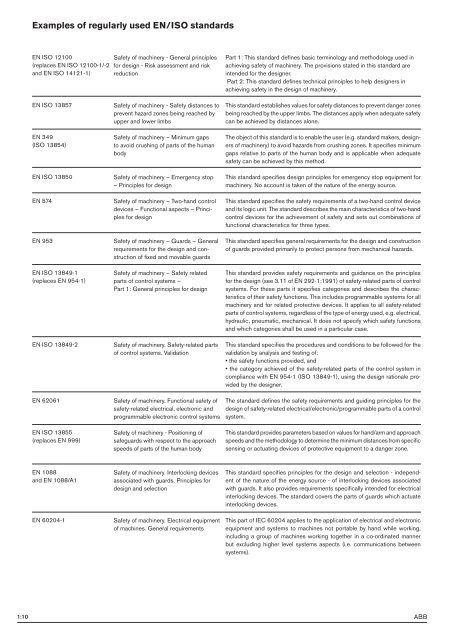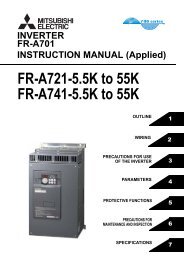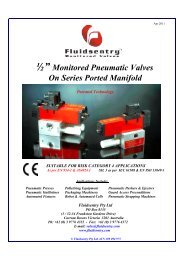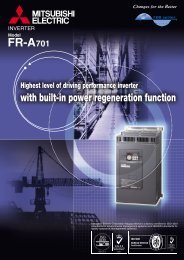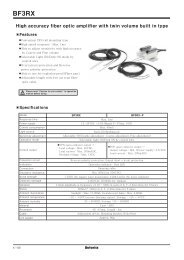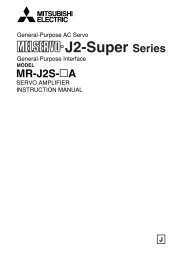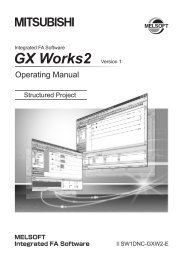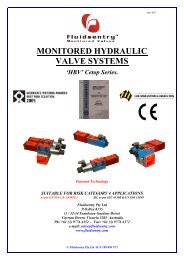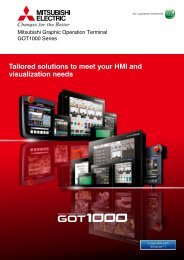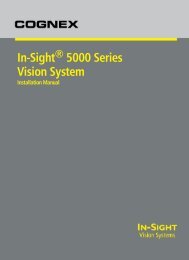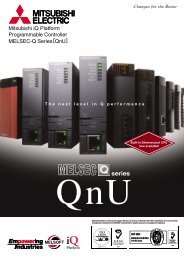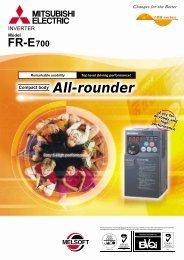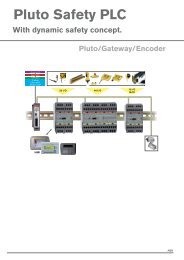The Safety Handbook ABB Jokab - Automation Systems and Controls
The Safety Handbook ABB Jokab - Automation Systems and Controls
The Safety Handbook ABB Jokab - Automation Systems and Controls
- No tags were found...
Create successful ePaper yourself
Turn your PDF publications into a flip-book with our unique Google optimized e-Paper software.
Examples of regularly used EN/ISO st<strong>and</strong>ardsEN ISO 12100(replaces EN ISO 12100-1/-2<strong>and</strong> EN ISO 14121-1)<strong>Safety</strong> of machinery - General principlesfor design - Risk assessment <strong>and</strong> riskreductionPart 1: This st<strong>and</strong>ard defines basic terminology <strong>and</strong> methodology used inachieving safety of machinery. <strong>The</strong> provisions stated in this st<strong>and</strong>ard areintended for the designer.Part 2: This st<strong>and</strong>ard defines technical principles to help designers inachieving safety in the design of machinery.EN ISO 13857EN 349(ISO 13854)EN ISO 13850EN 574EN 953EN ISO 13849-1(replaces EN 954-1)EN ISO 13849-2<strong>Safety</strong> of machinery - <strong>Safety</strong> distances toprevent hazard zones being reached byupper <strong>and</strong> lower limbs<strong>Safety</strong> of machinery – Minimum gapsto avoid crushing of parts of the humanbody<strong>Safety</strong> of machinery – Emergency stop– Principles for design<strong>Safety</strong> of machinery – Two-h<strong>and</strong> controldevices – Functional aspects – Principlesfor design<strong>Safety</strong> of machinery – Guards – Generalrequirements for the design <strong>and</strong> constructionof fixed <strong>and</strong> movable guards<strong>Safety</strong> of machinery – <strong>Safety</strong> relatedparts of control systems –Part 1: General principles for design<strong>Safety</strong> of machinery. <strong>Safety</strong>-related partsof control systems. ValidationThis st<strong>and</strong>ard establishes values for safety distances to prevent danger zonesbeing reached by the upper limbs. <strong>The</strong> distances apply when adequate safetycan be achieved by distances alone.<strong>The</strong> object of this st<strong>and</strong>ard is to enable the user (e.g. st<strong>and</strong>ard makers, designersof machinery) to avoid hazards from crushing zones. It specifies minimumgaps relative to parts of the human body <strong>and</strong> is applicable when adequatesafety can be achieved by this method.This st<strong>and</strong>ard specifies design principles for emergency stop equipment formachinery. No account is taken of the nature of the energy source.This st<strong>and</strong>ard specifies the safety requirements of a two-h<strong>and</strong> control device<strong>and</strong> its logic unit. <strong>The</strong> st<strong>and</strong>ard describes the main characteristics of two-h<strong>and</strong>control devices for the achievement of safety <strong>and</strong> sets out combinations offunctional characteristics for three types.This st<strong>and</strong>ard specifies general requirements for the design <strong>and</strong> constructionof guards provided primarily to protect persons from mechanical hazards.This st<strong>and</strong>ard provides safety requirements <strong>and</strong> guidance on the principlesfor the design (see 3.11 of EN 292-1:1991) of safety-related parts of controlsystems. For these parts it specifies categories <strong>and</strong> describes the characteristicsof their safety functions. This includes programmable systems for allmachinery <strong>and</strong> for related protective devices. It applies to all safety-relatedparts of control systems, regardless of the type of energy used, e.g. electrical,hydraulic, pneumatic, mechanical. It does not specify which safety functions<strong>and</strong> which categories shall be used in a particular case.This st<strong>and</strong>ard specifies the procedures <strong>and</strong> conditions to be followed for thevalidation by analysis <strong>and</strong> testing of:• the safety functions provided, <strong>and</strong>• the category achieved of the safety-related parts of the control system incompliance with EN 954-1 (ISO 13849-1), using the design rationale providedby the designer.EN 62061<strong>Safety</strong> of machinery. Functional safety ofsafety-related electrical, electronic <strong>and</strong>programmable electronic control systems<strong>The</strong> st<strong>and</strong>ard defines the safety requirements <strong>and</strong> guiding principles for thedesign of safety-related electrical/electronic/programmable parts of a controlsystem.EN ISO 13855(replaces EN 999)<strong>Safety</strong> of machinery - Positioning ofsafeguards with respect to the approachspeeds of parts of the human bodyThis st<strong>and</strong>ard provides parameters based on values for h<strong>and</strong>/arm <strong>and</strong> approachspeeds <strong>and</strong> the methodology to determine the minimum distances from specificsensing or actuating devices of protective equipment to a danger zone.EN 1088<strong>and</strong> EN 1088/A1EN 60204-1<strong>Safety</strong> of machinery. Interlocking devicesassociated with guards. Principles fordesign <strong>and</strong> selection<strong>Safety</strong> of machinery. Electrical equipmentof machines. General requirementsThis st<strong>and</strong>ard specifies principles for the design <strong>and</strong> selection - independentof the nature of the energy source - of interlocking devices associatedwith guards. It also provides requirements specifically intended for electricalinterlocking devices. <strong>The</strong> st<strong>and</strong>ard covers the parts of guards which actuateinterlocking devices.This part of IEC 60204 applies to the application of electrical <strong>and</strong> electronicequipment <strong>and</strong> systems to machines not portable by h<strong>and</strong> while working,including a group of machines working together in a co-ordinated mannerbut excluding higher level systems aspects (i.e. communications betweensystems).1:10<strong>ABB</strong>


